Introduction
Blockchain technology has no real meaning that is commonly understood, but you can imagine it’s meaning. It is therefore essential to answer the question, “What is blockchain technology?”
In this technology, we learn how to block chain work and why it is so important. What are the advantages of this field if you are choosing this technology?
- Introduction
- What is blockchain technology?
- History of Blockchain technology
- Why is blockchain technology so popular?
- Structure and Design of Blockchain Technology
- How does blockchain technology work?
- Blockchain combines three major technologies:
- Types of Blockchain
- The Process of Transaction in blockchain technology
- Advantages and Disadvantages of Blockchain technology
- 10 Steps to Your First Blockchain Application
- What is the difference between bitcoin and blockchain?
- importance of blockchain technology
- Proof of Work (PoW) and Proof of Stake (PoS)
- How to Invest in Blockchain Technology
- What are the characteristics of blockchain technology?
- What are the main components of blockchain technology?
- What are blockchain protocols?
- What is Blockchain as a Service?
- Frequently ask questions
What is blockchain technology?
Blockchain technology is the method to record the information, and it makes it easy to understand and manipulate the system. It is distributed software that distributes transactions over a network of computers that are connected to the blockchain.
Blockchain technology is the structure that stores transaction records in multiple databases over the network. The place where transaction records are stored is called “blocks,” and multiple databases are called “chains,” where all blocks are connected with each other with the help of “nodes.”. All storage is known as a “digital ledger,” which means that all information is stored in digital form.
In this ledger, all transactions are authorized by a digital signature, which is the owner of this ledger. So that this is highly secure.
A digital ledger is like a Google Sheet; it are shared with multiple computers over the network, and anyone can view the data, but they can not corrupts it.
History of Blockchain technology
Satoshi Nakamoto, whose identity remains unknown today, first introduced the concept of blockchain in 2008. Nakamoto used the same technology as Hashcash, and the design continued to be improved and developed. It would eventually become a key component of Bitcoin, a popular form of cryptocurrency, which would serve as the public ledger for all network transactions. The file size of the Bitcoin blockchain, which contains all transactions and records on the network, continued to grow. By August 2014, it had reached 20 gigabytes and eventually exceeded 200 gigabytes by early 2020.
Why is blockchain technology so popular?
Suppose you are sending money from your bank account to a family member or friend. Log in to your online banking and transfer the amount using the recipient’s account number. Once the transaction is completed, the bank updates the transaction record. Sounds easy enough, right? There is an underlying problem that most of us ignore.
These types of transactions can be tampered with very quickly. Those who know this truth are often wary of using these types of transactions, which is why third-party payment applications have developed in recent years. But this vulnerability is essentially the reason for the creation of blockchain technology.
Technically, blockchain is a digital ledger that has attracted a lot of attention recently. But why has it become so popular? Now, let’s dive deeper into it to understand the entire concept.
Keeping data and transaction records is an important part of business. This information is often processed in-house or through third parties such as brokers, bankers, and lawyers, adding time and/or cost to your business. Fortunately, blockchain avoids this lengthy process and facilitates faster transactions, saving both time and money.
Most people think that blockchain and bitcoin can be used interchangeably, but this is actually not the case. Blockchain is a technology that can support various applications related to many industries, such as finance, supply chain management, and manufacturing, while Bitcoin is a currency that depends on blockchain technology to ensure its security.
Blockchain is an emerging technology that has many benefits in the growing digital world.
Highly Secure
It uses a digital signature feature to conduct fraud-free transactions, making it impossible for other users to corrupt or change the data of an individual without a specific digital signature.
Decentralized System
Conventionally, you need the approval of regulatory authorities like a government or bank for transactions; however, with blockchain, transactions are done with the mutual consensus of users, resulting in smoother, safer, and faster transactions.
Automation Capability
It is programmable and can generate systematic actions, events, and payments automatically when the criteria of the trigger are met.
Structure and Design of Blockchain Technology
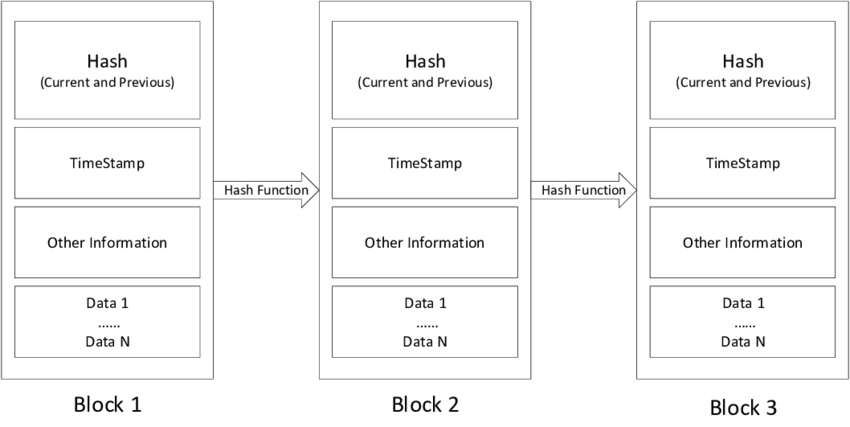
A blockchain is a decentralized ledger, a series of blocks. Each block has its own data set. Each block is connected to a link with a chronological chain of information with the help of cryptography. Blockchain is designed to ensure the data security of transactions before they are added to the blockchain network of nodes.
Blocks
A block in a blockchain is a combination of three main components:
- The header section stores metadata such as a timestamp, which has a random number used in the mining process, and the previous block’s hash.
- The data section contains the main and actual information, like transactions and smart contracts, that are stored in the block.
- Lastly, the hash section is a unique cryptographic value that works as a representative of the entire block and is used for verification purposes.
Block Time
Block time refers to the time it takes to create a new block within the blockchain. Different blockchains have different block times, which can range from seconds to minutes or even hours. Shorter block times allow transactions to be confirmed faster, but they also increase the chance of collisions. On the other hand, longer block times increase transaction confirmation time but reduce the probability of collisions.
Hard Forks
A hard fork in a blockchain refers to a permanent branch in the history of the blockchain, resulting in the creation of two separate chains. This may be due to fundamental changes to the blockchain’s protocol, where not all nodes agree on updates. A hard fork can create a new cryptocurrency or split an existing one, and it requires consensus among network participants to resolve it.
Decentralization
Decentralization is a key feature of blockchain technology. In a decentralized blockchain, there is no single central authority that can control the network. With decentralization, decision-making authority is distributed among a network of nodes that collectively verify and agree on transactions added to the blockchain. This decentralized nature of blockchain technology helps promote transparency, trust, and security. It also reduces the risk of relying on single points of failure and the risk of data manipulation.
Finality
Finality refers to the irreversible confirmation of transactions on the blockchain. Once a transaction is added to a block and that block is confirmed by the network, that block becomes immutable and cannot be undone. This feature ensures data integrity, prevents double spending, and provides a high level of security and trust in the blockchain type and consistency.
Openness
Openness in blockchain technology makes the blockchain accessible to anyone who intends to participate in the network. This implies that it is open to all, and anyone can join the network, validate transactions, and add new blocks to the blockchain, so long as they know the consensus rules. Openness promotes inclusivity, transparency, and innovation, as it allows for participation from various stakeholders.
Public Blockchain
It is a kind of blockchain that is open to the public and allows everyone to join the network to perform transactions and participate in the consensus process. Public blockchains are transparent because all transactions are publicly recorded.
How does blockchain technology work?
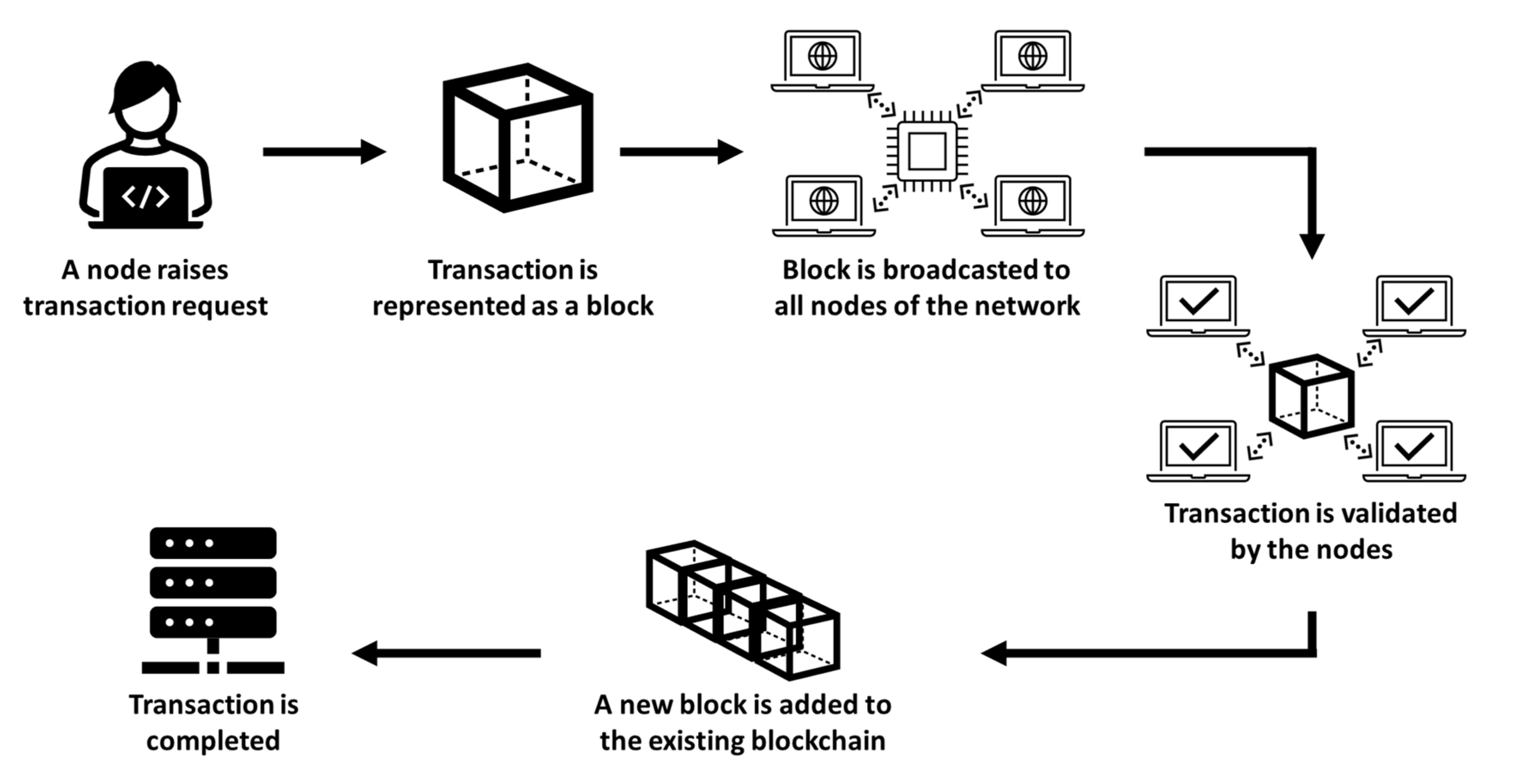
You may have noticed that many companies around the world have integrated blockchain technology in recent years. But how does blockchain technology actually work? Is this a significant change or just an addition? Blockchain progress is still shallow and may become revolutionary in the future. It has a penis. So let’s learn the secrets of this technology.
Blockchain combines three major technologies:
- Encryption Key
- Peer-to-peer network with shared ledgers
- Computing means for storing network transactions and records
Encryption Key
An encryption key consists of two keys: a private key and a public key. These keys provide smooth transactions between two parties. Every party has these two keys, which are used to create a digital signature identity. This identity is the most important factor in blockchain technology. A digital signature is used to authorize and control the transaction. Digital signatures are merged with peer-to-peer networks, which are called nodes.
Types of Blockchain
There are different types of blockchains. they are:
A private blockchain network
Private block chain are operated by private networks like private organizations and private companies. It allows you to customize the business, authorize settings, and other security options.
A public blockchain network
It is operated in public networks called public blockchain. Public blockchains are like bitcoin and cryptocurrency. The public blockchain helps to determine some challenges like security and centralization. In this blockchain, data is distributed into peer-to-peer networks rather than one storage. There are two algorithms used to verify the authenticity of information: proof of stake and proof of work.
A permissioned blockchain network or hybrid blockchain network
It provide individuals access to authorize. Organizations typically set up this type of blockchain to get the best of both worlds, allowing for better structure in allocating who can participate in the network and what transactions they can participate in.
Consortium blockchain
Like permissioned blockchains, consortium blockchains have both public and private components, except that multiple organizations manage a single consortium blockchain network. This type of blockchain can be complicated to set up initially, but once it is up and running, it can provide better security. Additionally, consortium blockchains are ideal for collaboration with multiple organizations.
Hybrid blockchain
A hybrid blockchain is a combination of both public and private blockchains. In hybrid blockchains, some parts of the blockchain are public and transparent, while other parts are private and accessible only to certain authorized participants. This makes hybrid blockchains ideal for use when a balance between transparency and privacy is required. For example, in supply chain management, some information may be accessible by multiple parties, but sensitive data may be kept private.
Side chain
A sidechain is a separate blockchain that runs parallel to the main blockchain, allowing for additional functionality and scalability. Sidechains allow developers to experiment with new features and applications without affecting the integrity of the main blockchain. For example, sidechains can be used to build decentralized applications or implement certain consensus mechanisms. Sidechains can also be used to process transactions on the main blockchain to reduce congestion and improve scalability.
Blockchain layer
Blockchain layering refers to the concept of creating multiple layers of the blockchain together. Each layer can have its own consensus mechanisms, rules, and capabilities that allow it to interact with other layers. This improves scalability as transactions can be processed in parallel in different layers. For example, the Lightning Network, built on the Bitcoin blockchain, is a second-layer solution that enables faster and cheaper transactions by creating payment channels between users.
The Process of Transaction in blockchain technology
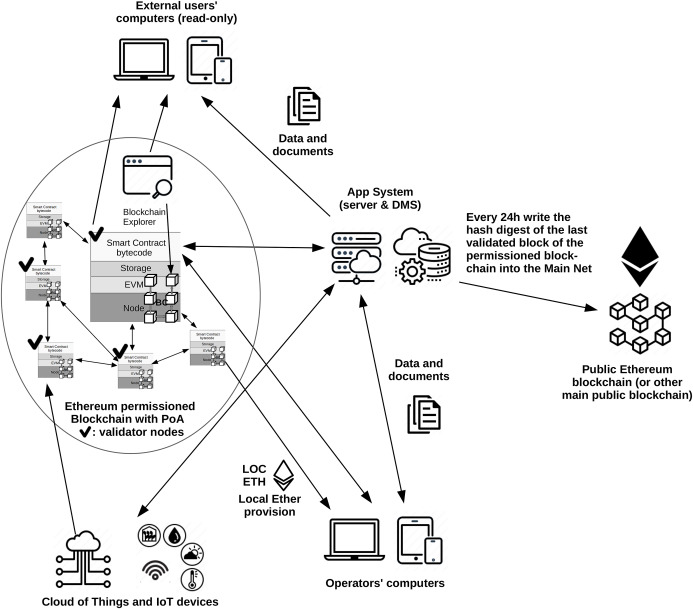
One of the key features of blockchain technology is the way in which transactions are verified and approved. For example, if two people want to make a transaction using a private key and a public key, the first party associates the transaction information with the second party’s public key. This comprehensive information is compiled into one block.
Blocks contain digital signatures, timestamps, and other important related information. Please note that the block does not contain the identities of the individuals involved in the transaction. This block is sent to all nodes in the network, and when the appropriate person matches the block using their private key, the transaction is successfully completed.
Apart from conducting financial transactions, blockchain can also store transaction details like real estate and vehicles.
Here are some use cases that illustrate how blockchain works:
Hash encryption
Blockchain technology uses hashing and encryption to secure data, and it primarily relies on the SHA256 algorithm to secure information. The sender address (public key), recipient address, transaction, and private key details are sent through the SHA256 algorithm. The encrypted information, called hash encryption, is sent around the world and added to the blockchain after verification. The SHA256 algorithm makes hash encryption almost impossible to hack and simplifies sender and recipient authentication.
Proof of work
In blockchain, each block has four main headers.
- Previous hash: This hash address points to the previous block.
- Transaction Details: Details of all transactions that have taken place.
- Nonce: An arbitrary number cryptographically assigned to distinguish the hash addresses of a block.
- Block hash address: All of the above (i.e., previous hash, transaction details, nonce) are sent through a hashing algorithm. This results in an output consisting of a 256-bit, 64-character-long value called a unique “hash address.”. Therefore, it is called the hash of the block.
Mining
In blockchain technology, the process of adding transaction details to the existing digital or public ledger is called “mining.”. Although the term is associated with Bitcoin, it is also used to refer to other blockchain technologies. Mining involves generating hashes of block transactions, which are difficult to forge, thereby making the entire blockchain secure without the need for a central system.
Advantages and Disadvantages of Blockchain technology
Like any form of technology, blockchain also has some advantages and disadvantages that need to be considered.
Advantage
One of the main benefits of blockchain is the level of security it can provide. This also means that blockchain can protect and secure sensitive data from online transactions. There is no third-party involvement, including financial institutions or government agencies.
Disadvantage
Blockchain and cryptography involve the use of both public and private keys, but problems with private keys have been reported. If users lose their private keys, they will face many challenges, which is one of the disadvantages of blockchain. Another disadvantage is that scalability is limited due to the limited number of transactions per node. Because of this, multiple transactions and other tasks may take several hours to complete. It can also be difficult to change or add to information once it is recorded, which is another major drawback of blockchain.
10 Steps to Your First Blockchain Application
- First, understand blockchain technology and what components are used in it.
- Understand the purpose of using this application.
- Create use cases for your application.
- Check if there is already an existing blockchain that suits your purpose.
- Explore the different types of blockchain platforms available for your application. There are many types of blockchains, each with its own advantages and disadvantages.
- Choose the right platform to develop your app.
- Select the consensus algorithm to use.
- Solidity: Learn Ethereum’s programming language for smart contracts and DApps (decentralized applications).
- Learn how to use Truffle or Remix, a development tool for Ethereum DApps and smart contracts.
- Get an Ethereum account or wallet and buy Ether (ETH), the currency of the Ethereum network.
What is the difference between bitcoin and blockchain?
Bitcoin
Bitcoin is a digital currency that was first introduced in 2009 and is the most popular and successful cryptocurrency to date. The popularity of Bitcoin is due to its decentralized nature. This means that there is no central authority or bank that controls the supply of bitcoin. This also means that transactions are anonymous, and there are no transaction fees when using Bitcoin.
Blockchain
A blockchain is a database of transactions between two parties, and blocks of data containing information about each transaction are added to the chain in chronological order as the transaction occurs. Blockchains are constantly growing as new blocks are added, and the number of subsequent blocks created makes it more difficult to alter records over time.
importance of blockchain technology
Blockchain is important because it has the potential to revolutionize the banking industry. Banks need to respond quickly to the changing needs of the digital age, and blockchain offers a way for them to keep up. By using blockchain, banks can provide their customers with a safer and more efficient way to transact. Additionally, blockchain can help banks streamline their operations and reduce costs.
Proof of Work (PoW) and Proof of Stake (PoS)
Proof of Work (PoW)
Proof of Work (PoW) is an algorithm that creates blocks and secures the blockchain. Miners must solve puzzles to create blocks and receive block rewards in return.
Proof of Stake (PoS)
Proof of Stake (PoS) is an alternative algorithm for securing the blockchain that does not require mining. Instead, users must lock some of their coins for a certain period of time to be eligible to receive rewards.
How to Invest in Blockchain Technology
Blockchain technology and stocks can be lucrative investments, and there are many ways to take the next step toward purchasing your first blockchain investment. When it comes to investing in blockchain technology, Bitcoin is usually the first thing that comes to mind, but it should not be ignored. Apart from Bitcoin, you also have the option to invest in crypto penny stocks like altcoins and Litecoin. There are also some apps and services that are in the pre-development stage and use blockchain technology to raise funds. Investors may buy coins in the hope that the price will increase as the service or app becomes more popular. Another way to invest in blockchain technology is to invest in startups built on blockchain technology. Finally, there is always the option to invest in pure blockchain technology.
What are the characteristics of blockchain technology?
- Blockchain technology is a distributed ledger that is secure, transparent, and immutable.
- Blockchain technology can be used to create decentralized databases that are tamper-proof, potentially revolutionizing the way we interact with the digital world.
- Blockchain technology is secure, transparent, and tamper-proof.
What are the main components of blockchain technology?
There are three main components to blockchain technology.
- Distributed ledgers, consensus mechanisms, and smart contracts.
- A distributed ledger is a database distributed across a network of computers. A consensus mechanism allows a network of computers to agree on the state of the ledger.
- Smart contracts allow blockchain to be used for more than just a database.
What are blockchain protocols?
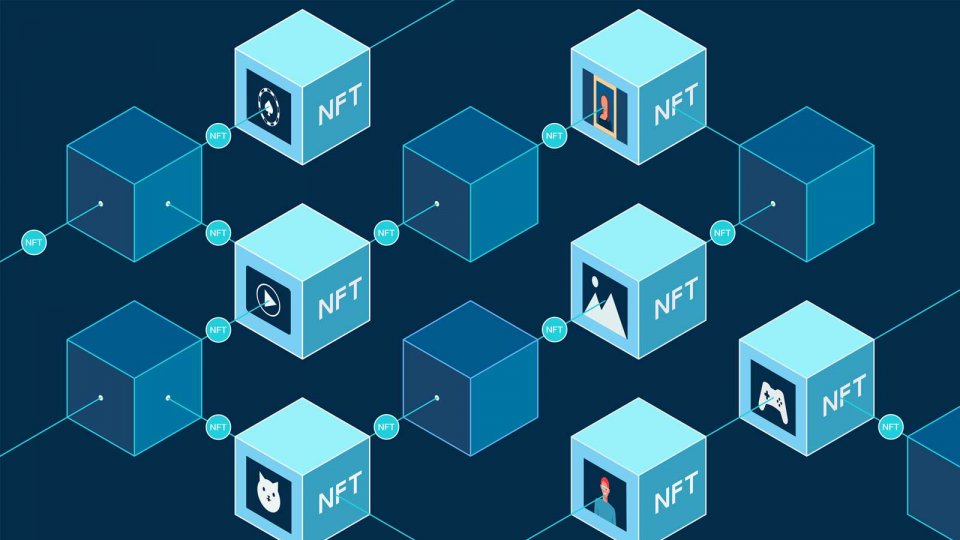
The three most popular protocols Bitcoin was the first blockchain protocol and is the most widely used.
- Bitcoin: Bitcoin is a decentralized digital currency, also known as a cryptocurrency. It exists on a decentralized network of computers, often called a blockchain, that tracks all transactions made using the currency. Bitcoin uses the proof-of-work algorithm to verify transactions and add them to the blockchain. Bitcoin was the first cryptocurrency created and is the most famous.
- Ripple: Ripple is a cryptocurrency similar to Bitcoin. Ripple uses a decentralized network of computers to track every transaction made using its currency. Ripple uses the proof-of-work algorithm to verify transactions and add them to the blockchain. Ripple was founded in 2012 and is the second-largest cryptocurrency by market capitalization.
- Ethereum: The Ethereum blockchain was first described in Vitalik Buterin’s white paper in 2013. Buterin is a Russian-born, Canadian-born programmer who has been involved with Bitcoin since its early days. Although he was excited about the technology, he believed that Bitcoin needed a scripting language for application development. They decided to create a new platform that would be more versatile than Bitcoin.
What is Blockchain as a Service?
Blockchain as a Service is a cloud-based service that enables customers to create, host, and use blockchain applications, smart contracts, and functionality on the Azure cloud platform. Azure provides integrated services that make it easier to develop, deploy, and manage blockchain applications. Customers can use Azure’s managed services to build and deploy blockchain applications without setting up and managing infrastructure.
Related topics about blockchain technology: You should know about
Frequently ask questions
What is blockchain, in simple words?
blockchain is a shareable ledger that records transactions and is difficult to modify or change. It also tracks tangible and intangible assets like cash and housing.
How many blockchains are there?
Currently, there are four types of blockchain networks: public blockchain, private blockchain, consortium blockchain, and hybrid blockchain.
What is the difference between a private blockchain and a public blockchain?
Private blockchains are open only to a select few, while public blockchains are open to the general public. Private blockchains are more secure than public blockchains.
Who invented blockchain?
Blockchain was created by an unknown person under the pseudonym Satoshi Nakamoto when he designed the online currency Bitcoin.
What is blockchain used for?
Although blockchain is commonly used for digital currencies like Bitcoin, it is now also used in various fields to secure records.
What are the three pillars of blockchain technology?
Decentralization, transparency, and immutability are the three main pillars of blockchain technology.
Who controls the blockchain?
Blockchain divides the power among all the users working on the network. No single user can control anything.
follow me : Twitter, Facebook, LinkedIn, Instagram
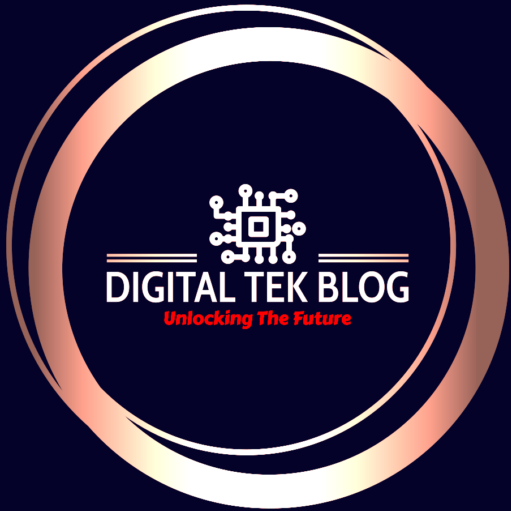

4 thoughts on “Unveiling the Potential: Top 5 Ways Blockchain Technology is Changing the World”
Comments are closed.